Watauga River Hatch Chart: Month-by-Month Guide
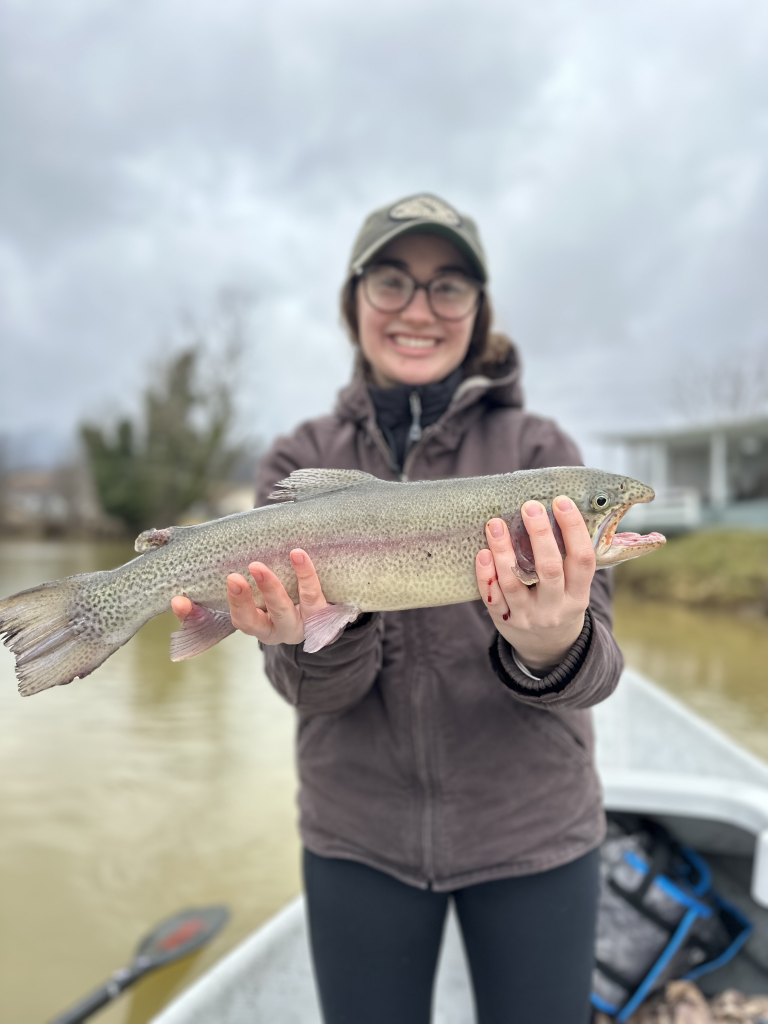
The Watauga River in Northeast Tennessee is one of the region’s most productive tailwaters, offering anglers consistent trout fishing year-round. Known for its diverse insect life and reliable flows, it’s a favorite destination for both local anglers and traveling fly fishers.
Planning a trip here without understanding the Watauga River hatch chart is like showing up to a test without studying. Knowing which insects are hatching each month—and having the right patterns ready—will give you the best chance at success.
At River Run Angling, our guides spend countless days on both the Watauga and the South Holston, helping anglers match the hatch and fish these rivers the way they were meant to be experienced. Whether you’re chasing picky browns on dries or nymphing deep runs for steady action, our guided float trips are designed to put you on the right bugs at the right time.
Why a Hatch Chart Matters on the Watauga River
Trout feed in cycles, and those cycles are driven by insect hatches. Knowing when midges, caddis, sulphurs, or blue-winged olives are most active can help you predict when trout will rise and what flies they’re most likely to take.
The Watauga is unique because of its year-round cold flows and consistent bug life. Anglers can find fishable hatches in every season, with highlights like the Watauga sulphur hatch in late spring and summer, reliable caddis activity, and steady midge and BWO action through the colder months.
Understanding these seasonal hatches not only makes you a more effective angler, it allows you to plan trips during the times that fit your fishing style—whether that’s technical dry fly action, subsurface nymphing, or throwing terrestrials along the banks.
Want to take the guesswork out of it? Book a guided float trip with River Run Angling. We’ll use our local knowledge of the hatches, flows, and fish behavior to put you where the trout are feeding and help you get the most out of your time on the water.
January – Midges and Winter BWOs
The Watauga stays cold and steady all winter, which means trout are still feeding if you’re willing to fish small. Midges are the primary hatch, with Blue-Winged Olives (BWOs) appearing on cloudy or overcast days.
- Fish slower pools and seams, as trout conserve energy in colder water.
- Flies to try: Zebra Midges (sizes 20–24), RS2s, small BWO emergers.
February – Midges and Early Stoneflies
Midge activity remains strong, making them the staple of winter fishing. On warmer afternoons, you might also see small black stoneflies fluttering on the surface. These aren’t thick hatches, but they can spark short bursts of dry fly action.
- Stay alert for surface activity on sunny days, especially near riffles and edges.
- Flies to try: Griffith’s Gnats, midge pupae, small stonefly nymphs.
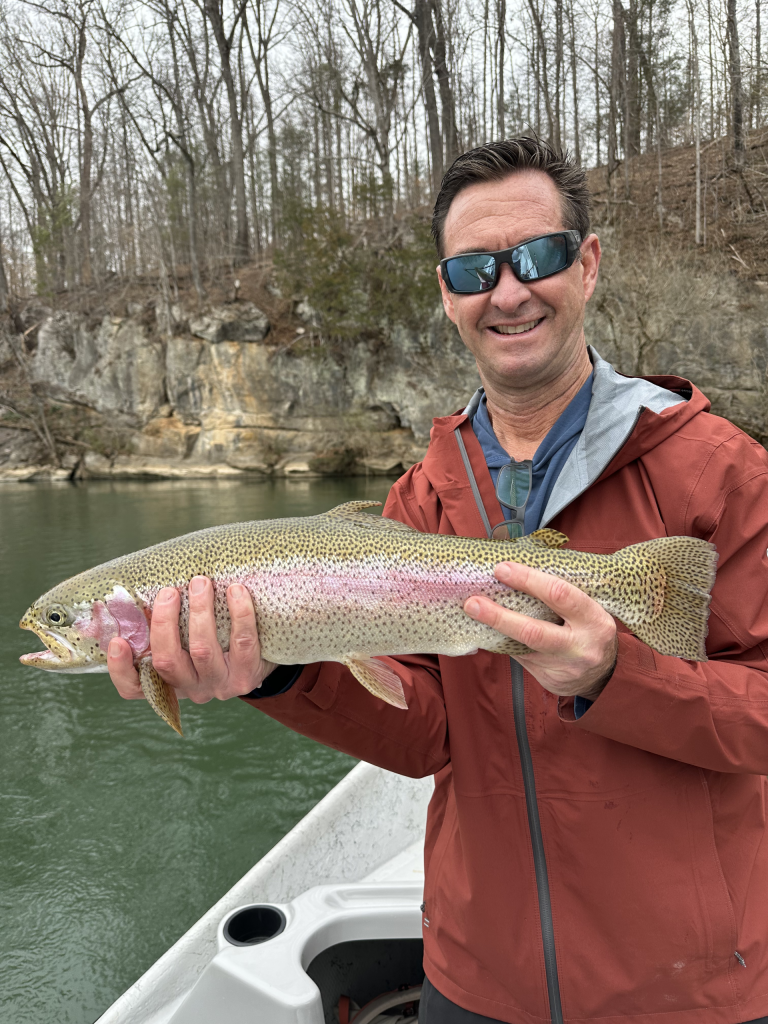
March – Blue-Winged Olives Begin
March marks the return of consistent Blue-Winged Olive hatches. These mayflies often appear in the early afternoon, providing one of the first solid dry fly opportunities of the year. Trout can be selective, so fly choice and presentation matter.
- Flies to try: BWO parachutes, pheasant tails, and emergers.
- Nymphing remains effective, but keep an eye out for risers once the olives start popping.
March – Blue-Winged Olives Return
Spring opens up more variety on the Watauga. Caddis hatches can be excellent this month, bringing fish to the surface in riffles and runs. Warmer days may also spark the first early sulphur activity, a preview of the hatch that will define late spring.
- Flies to try: Elk Hair Caddis, sulphur nymphs, caddis emergers.
- Watch for trout feeding aggressively in faster water during caddis hatches
April – Caddis and Early Sulphurs
Spring opens up more variety on the Watauga. Caddis hatches can be excellent this month, bringing fish to the surface in riffles and runs. Warmer days may also spark the first early sulphur activity, a preview of the hatch that will define late spring.
- Flies to try: Elk Hair Caddis, sulphur nymphs, caddis emergers.
- Watch for trout feeding aggressively in faster water during caddis hatches
May – Watauga Sulphur Hatch
The Watauga sulphur hatch is the crown jewel of this river. Beginning in May, sulphurs emerge in heavy numbers across much of the river, creating reliable and exciting dry fly fishing. Trout often key in on specific stages of the hatch, so matching the life cycle is critical.
- Flies to try: Comparaduns, sulphur emergers, split-case nymphs.
- Bring a variety of sizes and stages, as fish may switch between nymphs, duns, and spinners during a single hatch.
- Pro Tip: Target seams and riffle edges where sulphurs emerge most consistently.
👉May is prime time—Book Your Trip with River Run Angling to fish the sulphur hatch at its peak.
June – Sulphurs and Caddis
The sulphur hatch continues strong throughout June, often joined by good caddis activity. This combination keeps trout feeding aggressively on the surface. It’s a favorite time for dry fly purists.
- Be prepared to adjust quickly—trout can shift from caddis to sulphurs depending on the moment.
- Flies to try: Sulphur parachutes, caddis emergers, sulphur spinners.
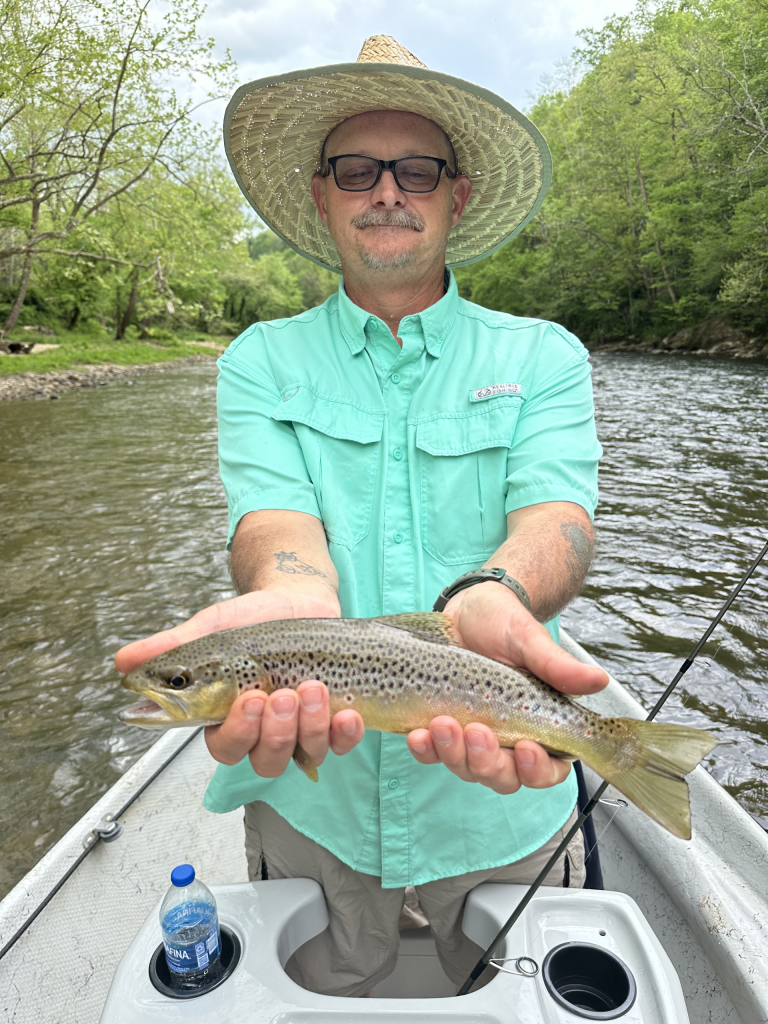
July – Sulphurs and Terrestrials
By July, sulphurs are still around but begin to taper. This is also when terrestrials enter the picture—ants, beetles, and grasshoppers get blown into the river and become a reliable food source.
- Flies to try: Beetles, flying ants, hopper-dropper rigs with sulphur nymphs.
- Morning sulphurs can give way to midday terrestrial action along grassy banks.
August – Terrestrials Dominate
August is a terrestrial month on the Watauga. While a few sulphurs may still linger, most anglers find success with big foam hoppers, beetles, and ants. Fishing can be explosive when a hungry brown slams a hopper off the surface.
- Flies to try: Hoppers (tan or yellow), beetles, ants.
- Hopper-dropper rigs remain productive for covering both surface and subsurface feeders.
September – BWOs and Terrestrials
As fall approaches, Blue-Winged Olives (BWOs) begin to hatch again, especially on overcast or rainy days. Terrestrials are still in play until the first frosts, making September a great transition month with multiple food sources.
- Flies to try: Parachute BWOs, ants, beetles.
- Fish can shift quickly between surface terrestrials and small mayflies, so carry both.
October – Fall BWOs and Midges
October offers steady BWO hatches and reliable midge activity. Cooler temperatures make trout more active, and hatches are often strong during midday hours.
- Flies to try: Tiny BWO dries, zebra midges, Griffith’s Gnats.
- Target seams and slower tailouts where trout rise confidently.
November – BWOs and Small Midges
November keeps the focus on BWOs and small midges. Fishing becomes more technical, but the Watauga still produces well for anglers who adjust to lighter tippets and smaller flies.
- Flies to try: RS2s, WD-40s, midge clusters.
- Look for overcast days that trigger solid BWO activity.
December – Midges Rule the River
By December, the primary hatch is midges. While fishing can be more demanding, patient anglers with the right patterns can enjoy consistent action.
- Flies to try: Zebra Midges, Griffith’s Gnats, midge pupae.
- Focus on deeper runs and slower water where trout feed efficiently.
Planning Your Trip Around the Watauga Hatches
The Watauga River produces fish year-round, but the best time to visit depends on the kind of fishing you enjoy most. If you’re after the excitement of the watauga sulphur hatch, late May through June is hard to beat—dense hatches and rising trout make for unforgettable dry fly action. Anglers who prefer variety should look to April for strong caddis activity or July and August for the fun of terrestrial fishing with hoppers, beetles, and ants. For steady winter action, midges and Blue-Winged Olives keep fish feeding even in the coldest months.
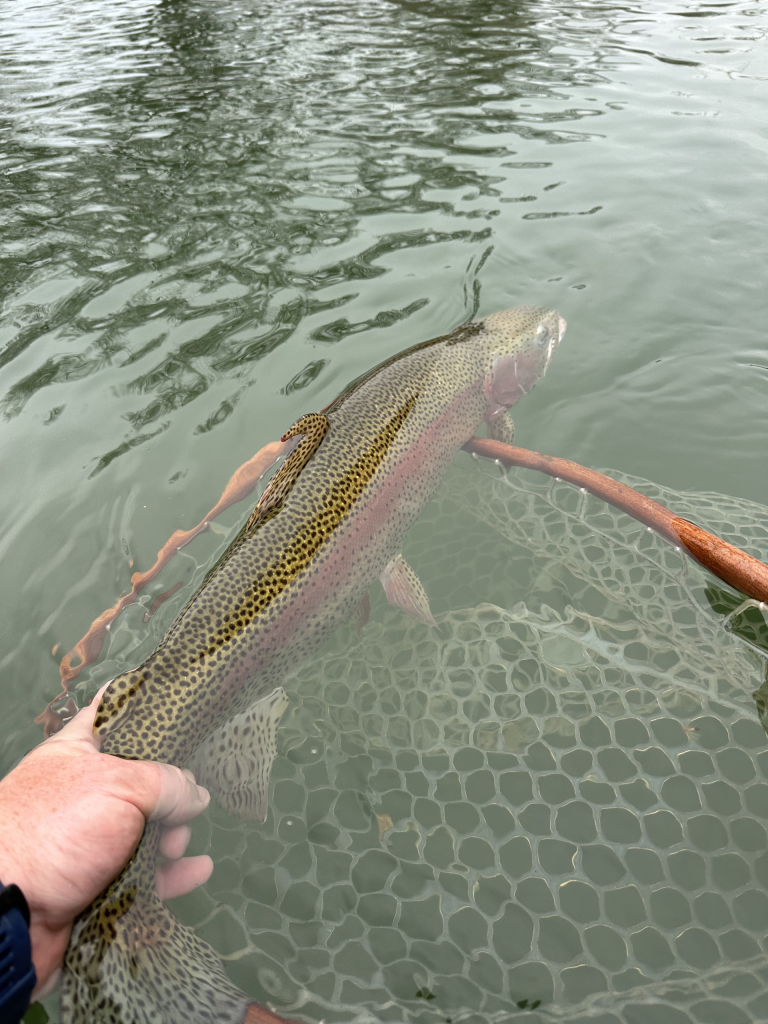
No matter when you come, local knowledge makes a difference. At River Run Angling, our guides spend countless days on the water, timing the hatches, tracking flows, and putting anglers in the right spots. Check out our Watauga River page for more details on trips, or pair it with a day on the nearby South Holston River to experience two of the best tailwaters in the Southeast. Many visitors book multi-day trips to fish both rivers for a complete Northeast Tennessee trout fishing experience.
Frequently Asked Questions
When is the best time to fish the Watauga River?
The best time to fish the Watauga River is May through June during the famous sulphur hatch, when dense hatches bring trout to the surface in large numbers. That said, the river offers productive fishing year-round, with midges and Blue-Winged Olives in the winter, caddis in the spring, and terrestrials in the summer.
What flies work best on the Watauga River?
The most effective flies depend on the season. In winter, midges and small BWOs are reliable. In spring and summer, sulphur and caddis patterns dominate. Late summer brings excellent terrestrial fishing with ants, beetles, and hoppers. Fall is best for Blue-Winged Olives and small midges.
How long does the sulphur hatch last on the South Holston?
The Watauga sulphur hatch typically starts in May and runs into early July. The heaviest hatches usually occur in late May and June, offering the most consistent dry fly opportunities.
Is the Watauga River good for beginners?
Yes. While the Watauga can be technical, it’s also a forgiving river for anglers of all skill levels when guided properly. At River Run Angling, we welcome beginners and tailor our trips to make sure each angler has a great experience on the water.
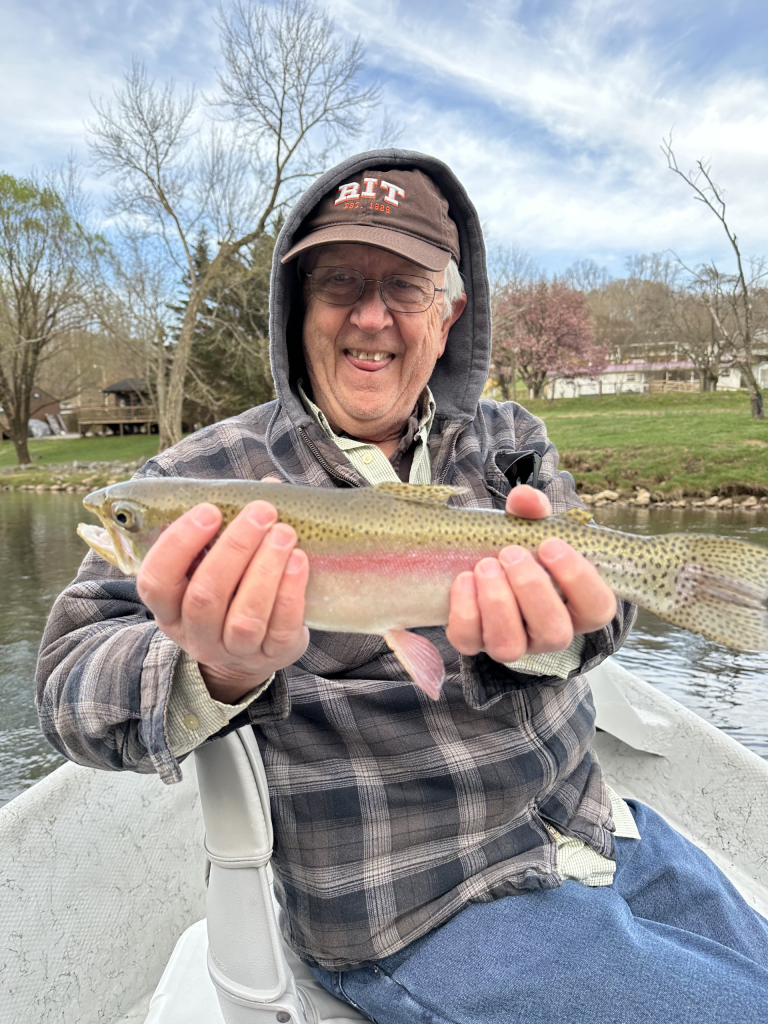
Book Your Watauga River Hatch Season Trip
The Watauga River hatch chart is your roadmap to success on one of Tennessee’s most productive tailwaters. Whether you want to experience the sulphur hatch in late spring, chase trout on caddis in April, or fool picky fish with midges in winter, planning your trip around the hatches makes every day on the river more rewarding.
At River Run Angling, we use our on-the-water experience to time these hatches and put anglers where the fish are feeding. From delicate dry fly presentations to hopper-dropper rigs along the banks, our guided float trips give you the confidence and knowledge to fish the Watauga the way it’s meant to be fished.
Ready to fish the Watauga during peak hatch season? Book your guided trip today and let River Run Angling show you why this river is a must-fish destination.
